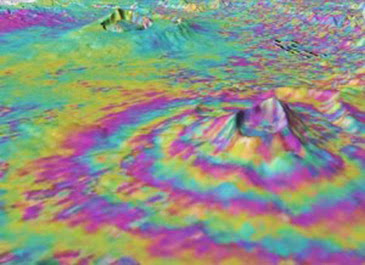
Little known volcanoes in one of Africa’s most stunning locations are to be explored in a bid to understand the threat they pose to life, livelihood and the landscape. Researchers are to assess largely uncharted volcanoes in the East African Rift Valley, home to vast mammal migrations, mountain gorillas, spectacular peaks and fertile plains.
The region’s volcanoes, numbering more than 100, are shrouded in mystery. Dates of their last eruptions are mostly unknown and very few have detectors in place to highlight early signs of activity.
The human and financial cost could be huge if any of the volcanoes in the densely-populated and economically crucial area of Ethiopia’s main rift become active.
Researchers aim to understand past volcanic behaviour, search for signs of current activity and make a long-range eruptive forecast for the region. A recent report for the World Bank ranked 49 of Ethiopia’s 65 volcanoes in the highest category of hazard uncertainty.
The eruption of Nabro volcano on the Ethiopia-Eritrea border in 2011 was a reminder of the potential threat to the region. Despite lying in a remote and sparsely populated location and with no historical record of eruption, it claimed the lives of 32 people and displaced 5,000 more. Prior to its eruption, the volcano was believed to be dormant.
The five-year project, focusing on the volcanoes of the Main Ethiopian Rift, will be led by researchers from the Universities of Edinburgh and Bristol, in collaboration with the Universities of Cambridge, Leeds, Oxford and Southampton, the British Geological Survey, Addis Ababa University and the Geological Survey of Ethiopia. Overseas partners include Reykjavik Geothermal, which is part of a multi-billion dollar investment to develop the infrastructure to exploit this rich source of geothermal power.
The multi-disciplinary team will collect samples, map the geological record of previous eruptions and deploy geophysical instruments before analysing the data and creating models of the eruptive history, current states of unrest, and computing the likelihood of future eruptions. The team will also work on the best way of communicating their results to the relevant authorities and communities.
The £3.7million project, known as RiftVolc, is funded by the Natural Environment Research Council and begins in September. It will build on previous successful studies collaborating with Addis Ababa University and the Geological Survey of Ethiopia in the region.
RiftVolc co-leader Dr Juliet Biggs, of the University of Bristol’s School of Earth Sciences said; “The East African Rift is a fascinating place, full of exciting scientific challenges. We’re thrilled to establish a major project to study the past, present and future behaviour of these little-known volcanoes, and to be able work with our Ethiopian partners on such a societally relevant project.”
Note : The above story is based on materials provided by University of Bristol









